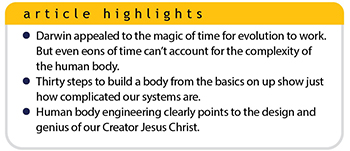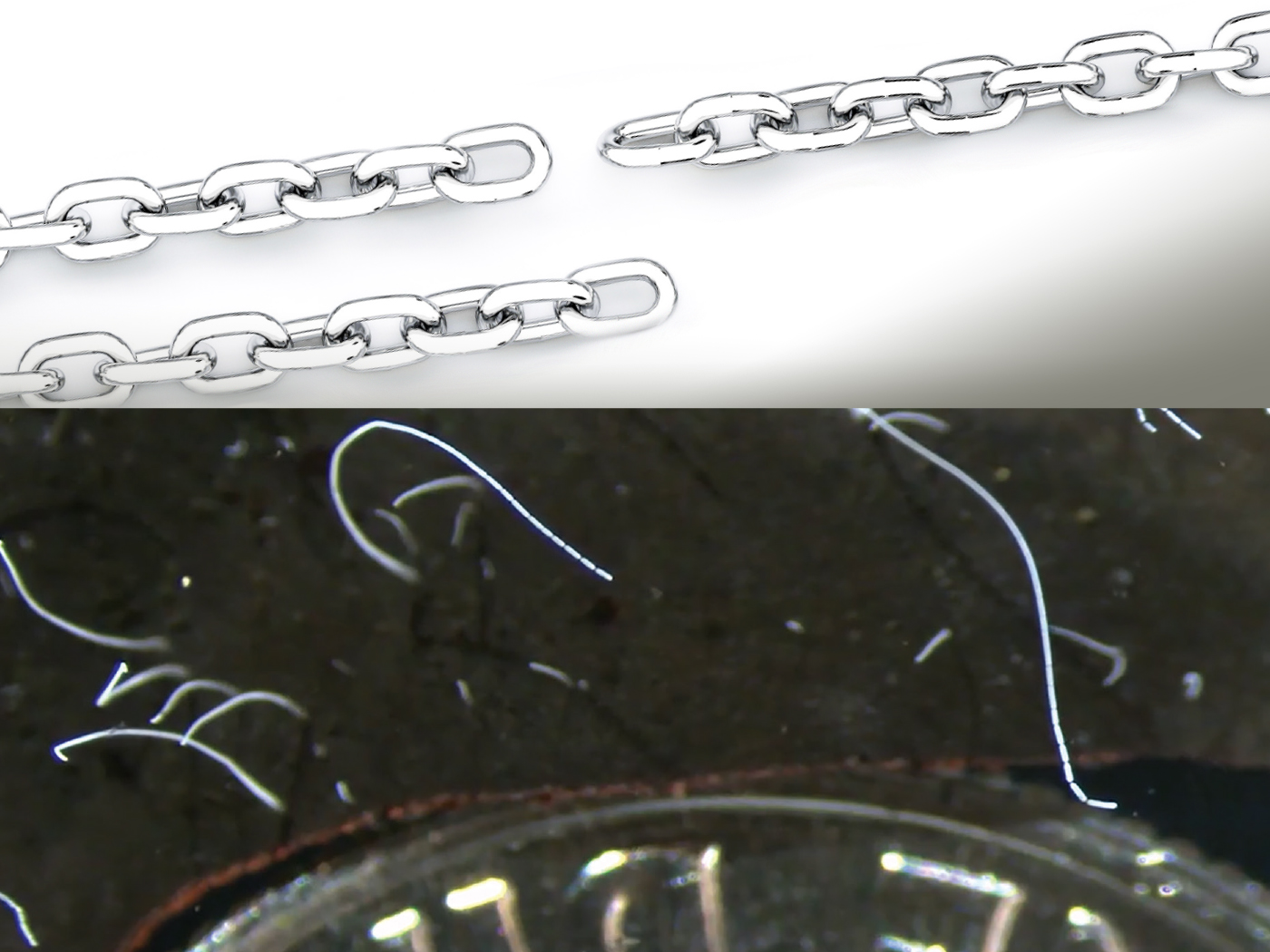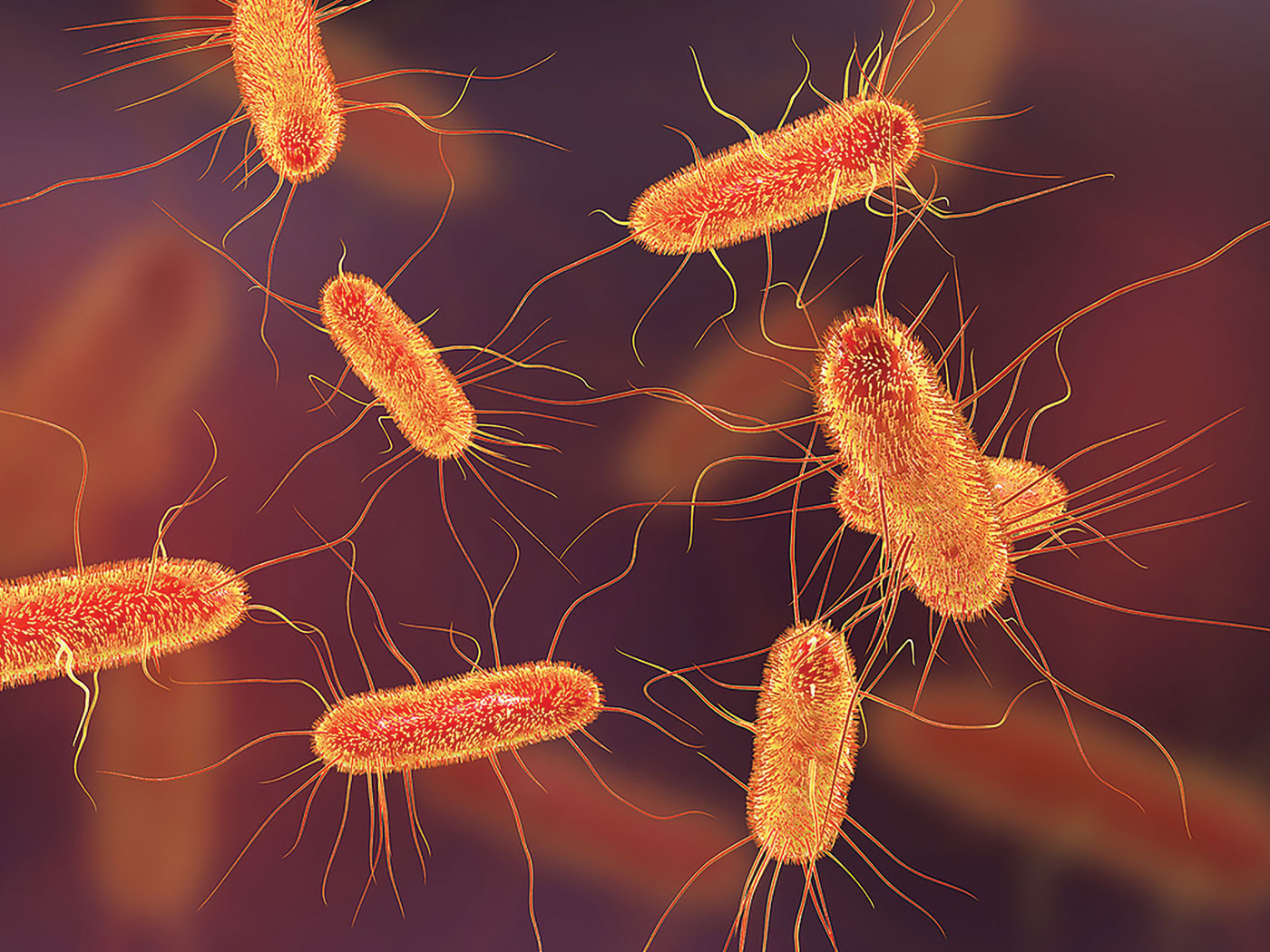 When Charles Darwin formulated his theory of evolution, he appealed to the logic of ancestry, the evident diversity of species, and the magic of time. We all understand that time changes things. However, how could even eons of time account for the great complexity of the human body—not to mention how multiple organs all work together to operate that body?
When Charles Darwin formulated his theory of evolution, he appealed to the logic of ancestry, the evident diversity of species, and the magic of time. We all understand that time changes things. However, how could even eons of time account for the great complexity of the human body—not to mention how multiple organs all work together to operate that body?
Our orchestrated metabolism depends on the preexistence of thermodynamically isolated membrane compartments bounded by lipid bilayer envelopes containing thousands of ingredients necessary for life. Join me in amazement at Jesus Christ’s engineering accomplishments in these 30 design requirements to build a human body. For most of these systems, damage or loss is lethal. They all must function together for human life to continue.
Thirty Steps to Build a Human Body
- Design the basics of life, namely DNA to mRNA to protein, lipid membrane compartments, and basic components: five kinds of nucleic acids, 20 kinds of amino acids, a variety of five and six carbon carbohydrates and oxidation/reduction chemical energy sources, just for starters.
- Design their arrangement for structural support, catalytic activity, information, modulation, motor functions, and signaling.
- Assemble materials in working order—random trial and error doesn’t work. For human DNA, that’s 23 chromosome pairs for a total of 6.4 billion bases or letters. This genetic code in each cell of our body codes for about 30,000 proteins, but only a subset of these is expressed in each type of cell. This controlled expression is highly regulated by continuous environmental tracking that activates or deactivates regulatory RNAs, control proteins, and epigenetic marks to control reading DNA.1 Proteins range in size from about 30 amino acids to 3,000 amino acids, but each must be placed in just the right order for proper function. There are more ways to arrange 20 amino acids into a single protein than there are grains of sand on Earth. Not enough time has passed since life started for chance to have arranged them into a single functional enzyme. And 10,000 of these proteins need to work together for a single cell to function. Scientists are still trying to discover how all this is possible.
- Provide precisely applied energy to assemble these intricate biochemical materials into functional systems: sunlight, chemical energy reducing sugars like glucose, oxidation/reduction sources, oxygen, and carbon dioxide.
- Locate or create an environment for readily available materials: food for carbon and nitrogen sources, air with just the right 21% oxygen, water, and minerals.
- Design repair systems: DNA repair, oxidized protein repair, and lipid repair.
- Design systems in every cell for replacement of damaged parts, including recycling and disposal.
- Design sensory systems that detect toxic environments to avoid.
- Design sensory systems in the tongue and nose to seek energy sources and continued supply of nutrients for growth.
- Design and implement systems for environmental tracking of nutrients, hormones, sunshine, dangers, and interpersonal interactions with other people.
- Build in chemical and electrochemical control systems that adjust heart and respiratory rate to variable energy demands.
- Design control systems to regulate smooth muscle tissue in vascular, digestive, secretory, respiratory, gustatory, and reproductive systems.
- Design control systems for skeletal muscle flexion, extension, and stretch sensation. Include pain sensors to avoid damage.
- Design epigenetic control systems for individual organ development and daily function from the same DNA instruction set, using continuous environmental tracking of light, nutrient consumption, hormonal status, thirst, temperature, pressure, CO2, and oxygen levels.
- Design an olfactory system for sensation and discrimination of food, toxins, pheromones, fire, and their interpretation.
- Design a vascular system with a heart pump to supply oxygen and CO2 exchange through the lungs. Design uptake systems in the stomach and intestines to acquire and distribute glucose, amino acids, fats, vitamins, minerals, and other nutrients. Include adaptable growth to expand and branch to reach every part of the body, and enlarge with exercise. Include a blood clotting cascade to plug leaks that arise from injury. Fill the blood vessels with new red blood cells made every day in the bone marrow. Fill the red cells with hemoglobin protein to carry oxygen throughout the body. Ensure the vascular system reaches every oxygen-demanding part of the body.
- Design kidneys to filter out waste and retain minerals in the blood and to fix the pH for reliable chemical reactions throughout the body.
- Design a liver to detoxify the blood and add fresh protein carriers of lipids, vitamins, iron, and copper.
- Design a digestive system to break down complex foods into simple amino acids, sugars, and fats, and to extract needed minerals and vitamins. Include specialized teeth and a tongue for the sense of taste.
- Design lungs with the right surface-to-volume ratio and proximity to blood vessels for uptake of oxygen and release of CO2. Connect the blood supply inlet from the heart and exits to the intestines for nutrient adsorption and to supply the high oxygen demand of the brain. Provide autonomic nerve control of respiratory rate from the brain based on oxygen and CO2 levels.
- Build a visual system with a lens to focus light on a retina for both black and white and color vision. Include an iris aperture adjustment to control the amount of light entering the system over 46 f-stops for detection over the range from one millionth (0.000001) of a candela per square meter to one hundred million (100,000,000) candelas per square meter. Process and categorize whole images to identify objects, remember episodes, read emotions on people’s faces, and read letters, words, and understand concepts.
- Design human vocal cords in a larynx with tongue and lips to synthesize speech and song controlled by the nervous system. Engineer a language acquisition protocol that builds a 50,000-word vocabulary and effortless choosing of subjects, verbs, and predicates.
- Design a brain auditory system to understand speech, track one voice in a noisy gathering, appreciate music, and determine direction.
- Create a vestibular system to enable upright posture, walking, and running without falling.
- Provide skin to enclose an entire body, retain water, and repel invasion. Embed sensors for pain, temperature, and pressure for continuous environmental tracking.
- Design an immune system to interface with and regulate microbes. Provide for continual monitoring that distinguishes self from non-self. Enable an adaptive response distributed over lymph nodes and made in the bone marrow and spleen with antibody protein combinations against over 10 billion potential targets. Manufacture a second set of cellular responders in the thymus that dismantle infected cells.
- Design and assemble a brain with 100 billion neurons and 100 trillion synapses. Subdivide it into numerous specialized subregions to process sensory information and exercise motor control for delicate and precise actions like brain surgery and piano concertos, plan activities, think abstractly, communicate, imagine, create, and love.
- Build in learning and memory systems to optimize performance.
- Design interpersonal communication systems that include speech/auditory perception, visual sensation and perception, emotions, and transgenerational communication by the written word.
- Include the ability for supernatural communication of the human spirit with the Holy Spirit to share in some of God’s wisdom and love. “In the image of God He created him; male and female He created them” (Genesis 1:27).
The complexity and order required for human life defy Darwinian reasoning of trial and error. The amazing complexities of the miracle of life shout for wisdom from a purposeful and omnipotent Creator. “[Jesus] is before all things, and in Him all things consist” (Colossians 1:17). “I will give praise to you for I am fearfully and wonderfully made” (Psalm 139:14).
References
- For more information about continuous environmental tracking, visit ICR.org/cet.
* Dr. Brewer is professor of biomedical engineering at University of California, Irvine. He earned his Ph.D. in biology at the University of California, San Diego.
















